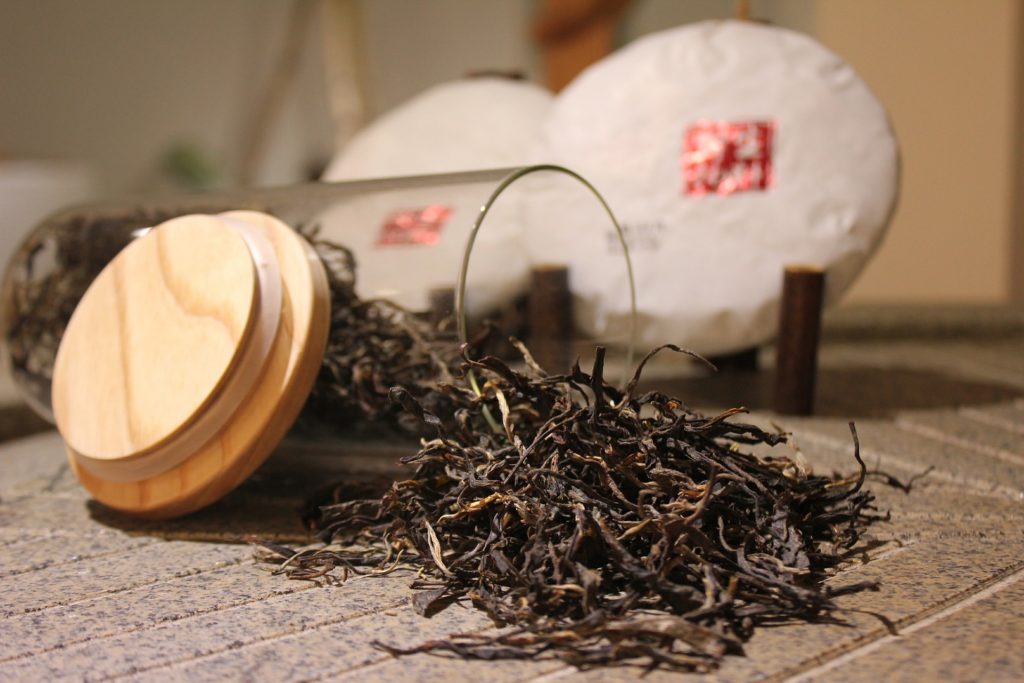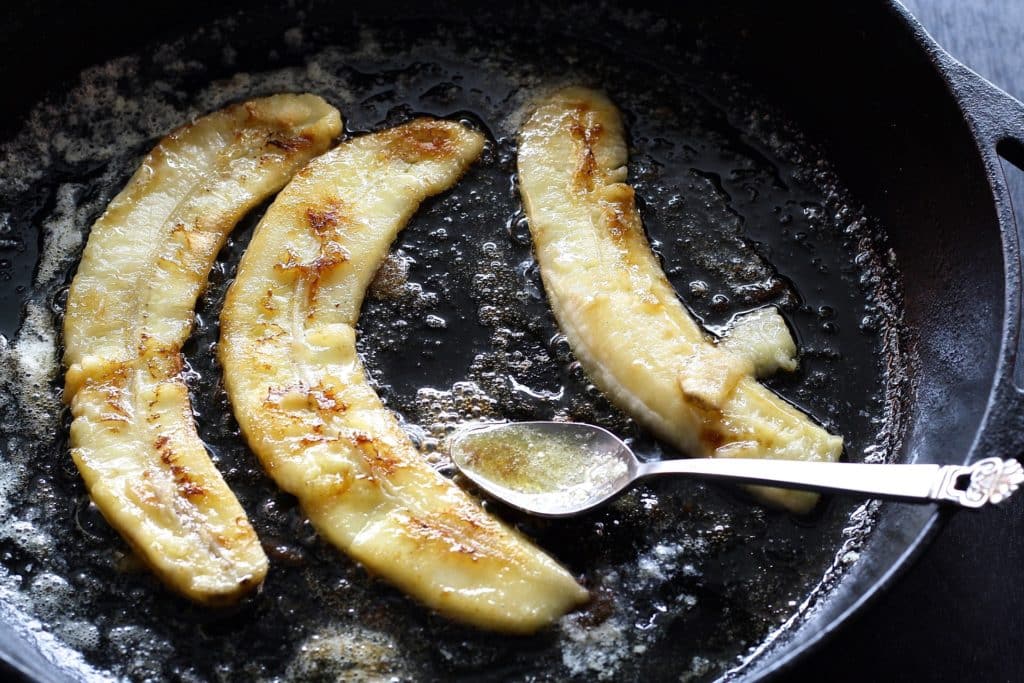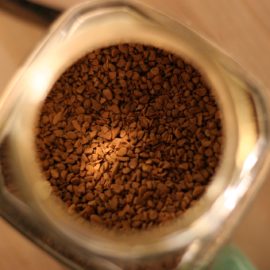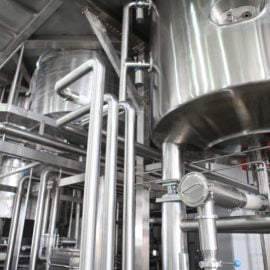
Wondering why the part of the apple you had taken a bite of became brown in just minutes? No longer appealing to eat, right? In food science, there are two types of browning: enzymatic and non-enzymatic browning. Years of research has been done to better understand these two.
This is to take advantage of non-enzymatic browning in many food items like nuts, baked products, fried foods and beans. And secondly, minimize and control the enzymatic browning in foods especially fruits and vegetables.
Let’s discuss the two further.
Table of Contents
Enzymatic browning
Enzymatic browning is an oxidation process that occurs in foods. It usually results in undesirable quality changes—in color, taste, texture and even nutrition.
How does enzymatic browning happen?
Enzymatic browning affects mostly fruits and vegetables. When you peel or cut open a fruit with a knife, oxygen is introduced to the damaged part. The presence of oxygen triggers the enzymes, polyphenol oxidase (PPO) in apples for example, to oxidize phenolic compounds in the tissues. This results in formation of quinones, which polymerize to form brown pigments called melanins.
Not only PPO in present in fruits and vegetables. PPO is also responsible for the black spots in crustaceans like shrimps and prawns. The black spots begin to manifest hours or days after harvest.
Most enzymatic browning is not desirable. To a consumer, it is maybe simple. Just remove the browning part of a banana and that’s it. But looking at the bigger picture, enzymatic browning is not a simple predicament. Through the years, the global food industry has experienced economic losses due to enzymatic browning. In fact, research shows that over half of produce is lost as a result of enzymatic browning.
The ways to control browning
To increase the yield and inhibit PPO in foods, many methods are used. These methods are classified into two groups: chemical methods and physical methods.
These physical methods work by the use of high or low temperature, by removing oxygen, and irradiation. They work by destroying the enzymes, slowing down the enzyme activity or by oxygen removal. While chemical methods include the use of antioxidants, acidifying agents and/or chelating agents. Also, a new way to fight browning is also starting to gain a following—genetic engineering.
Blanching

One common way of using high temperature to stop enzymatic browning is blanching. Through this method, the fruit or vegetable is heated in a short time (a few minutes). And then treated with cold air or iced water to immediately bring the temperature down. Not only it slows enzyme activity down. It also helps clean fruits and vegetables of dirt and microorganisms, and retain nutrients.
As a part of the pre-treatment process, blanching is widely used in many parts of the food manufacturing industry. For example, when preparing vegetables for freezing, blanching is necessary to stop the enzyme activity that may affect the color, texture, and flavor during storage.
Refrigeration and Freezing
The low temperature involved in refrigeration and freezing slows down reaction rates. As a result, foods retain their qualities: color, texture, and flavor. Furthermore, foods like fruits and vegetables, in their frozen state preserve their nutrients. And in some frozen fruits and vegetables, they contain more vitamins and minerals than their counterparts.
Further reading: What Is Chilling in the Food Industry?
Oxygen removal
Enzymatic browning can only take place in the presence of oxygen. When the oxygen removed, the browning process slows down. There are a few ways to achieve this. Today, Vacuum packaging and modified atmosphere packaging (MAP) are widely used. Both processes started in the 20th century, the time of many innovations in food science.
- Vacuum packaging
Vacuum packaging involves removing oxygen before sealing the pack, providing an airtight environment. The lack of oxygen also helps the food from spoiling quickly since microorganisms require oxygen to survive. Today, a wide variety of foods come vacuum packed like cured meats, cheese, cereals, and chips.
- Modified atmosphere packaging (MAP)
As the name suggests, MAP involves altering or changing the composition of gases inside a sealed food package. Basically, MAP aims to lower the level of oxygen in the pack while increasing the level of another gas like carbon dioxide and nitrogen. This ability to customize the proportion of gases in the packaging enables the food to maximize its shelf life.
Another benefit of MAP is the reduced ethylene production in fresh produce, which retards the ripening process. This is beneficial particularly to farmers who raise climacteric fruits. Read more about climacteric and non-climacteric fruits.
Today, MAP is more popular as a result of demand for fresh products and foods that are minimally processed.
Use of antioxidants and acidifying agents
As proven by studies, antioxidants and acidifying agents contain anti-browning properties. Ascorbic acid, an antioxidant (also called vitamin C) prohibits the conversion of phenols to quinones. Another thing is that enzyme activity declines as acidity lowers. Enzymes like PPO have an optimum pH level of 6.5 to 7.0. pH is a measure of how acidic or basic a substance is. This is why food items that contain vitamin C like lemon juice are effective to prevent browning fruits and vegetables. Crushed vitamin C is also an option.
Glutathione is an antioxidant that reduces melanin production. You may have probably heard of this antioxidant as a component in skin whitening. But glutathione does help prevent browning in food. This research used glutathione and cinnamic acid to prevent the browning in apple juice.
Irradiation
Food irradiation is the application of ionizing radiation to prolong the shelf life of foods by destroying microorganisms. To date, 3 sources of radiation are used as approved by FDA: gamma rays, x-rays, and electron beam. Irradiation can also fight enzymatic brown in fruits and vegetables by delaying sprouting and maturation.
You might ask: is it safe to consume irradiated foods? Yes, definitely. In fact, astronauts of National Aeronautics and Space Administration (NASA) eat irradiated meat during their trips to space.
This FDA page will tell you more about food irradiation.
Use of copper-chelating agents
Copper-chelating agents such as kojic acid, citric acid, sorbic acid, and EDTA are good anti-browning substances. They work by complexing copper, which is naturally found in PPO. As you can observed, some chelating agents have other anti-browning properties.
Genetic modification
If enzymes initiate the browning process, why not remove them? Through genetic engineering, this is possible. In fact, the GM apple variety called arctic apple lacks the enzymes that make it go brown. Arctic apple is the first genetically modified apple to go on sale. Other than the ability to not go brown, is there anything else special? Not much. Just as safe and nutritious as any other apple, according to the US FDA and CFIA. The very first GM food that entered the market was Flavr Savr, a more resistant tomato.
Benefits of enzymatic browning

Even if enzymatic browning causes losses in the food industry, there are a few things we thank it for. Enzymatic browning are essential for the development of characteristic color and flavor in cocoa or chocolate, coffee, and tea.
In cocoa and coffee processing, beans undergo fermentation for flavor development. However, beans that have not undergone full oxidization do not develop the flavor profile in cocoa and coffee. This is true even when they are roasted.
PPO is truly essential in cocoa and coffee processing. In fact, this study on PPO used external PPO to prepare raw cocoa beans from beans from unfermented ones. They added l-leucine to complete the chocolate-like aroma, as if they were fermented. The same study also made darker colored coffee beverage using external PPO.
In tea making, the enzymatic browning that occurs in the leaves help develop the flavor, color, and aroma. There are three types of tea, according to oxidation (fermentation) level: black, Oolong, and green tea. Black tea is fully oxidized, Oolong tea is semi-oxidized. And green tea is not oxidized.
Tea leaves contain catechins (such as EGCG, ECG, EGC, and EC), a natural antioxidant. However, the amount catechins differ. Black teas contain the least amount (around 10% solids) as a result of oxidation. Since they are not oxidized, green teas contain the highest level of catechins (up to 50%).
As an antioxidant, catechin inhibited melanosis of Pacific white shrimp in this study.
Non-enzymatic browning
The other type of food browning is non-enzymatic browning. Unlike enzymatic browning, the brown pigment in foods manifest without enzyme activity, as the name suggests. There are two forms of non-enzymatic browning: caramelization and Maillard reaction.
Caramelization

Caramelization is a form of non-enzymatic browning that occurs when the carbohydrates are heated. It is the process of browning of sugar in foods, to simply put. As you may already know, caramelization results in desirable flavor (caramel or nutty) and brown color in foods.
How does caramelization happen?
Caramelization is a part of nearly every cooking process. In fact, many recipes call for caramelized onions. Foods that contain milk, syrup, sugar cane, fruit—name it—can be caramelized.
Like I mentioned, caramelization involves heating of carbohydrates or sugar. The high temperature removes the water in the form of steam. Then comes the isomerization of the fragmented sugars. Polymerization, a process in which small molecules combine to form a large network molecule called a polymer, follows.
This series of processes results in volatile flavor chemicals such as ethyl acetate, maltol, furan and diacety. They are responsible for the nutty or caramel flavor in foods. While the polymers (caramels) including caramelens, caramelans, and caramelins produce the brown color. In food manufacturing, commercial caramels called E150 give various shades of brown in foods and beverages.
The rate of caramelization depends on many factors. This includes: heating time, other ingredients included, amount of sugar, and the type of sugar. Caramellization occurs fastest in fructose while it is slowest in maltose. See the below list.
| TYPE OF SUGAR | TEMPERATURE |
| Fructose | 230°F (110°C) |
| Galactose | 320°F (160°C) |
| Glucose | 320°F (160°C) |
| Sucrose | 320°F (160°C) |
| Maltose | 360°F (180°C) |
Caramelization achieve better flavor and color. However, prolonged heating and high temperature must be avoided. Sugar heated at over 360°F (180°C) to 400°F (204°C) diminishes quality. And it is not desirable especially when used for flavor. It usually results in bitter taste, very dark color and smells burned.
Breaking down of sugar and conversion into carbon starts at 410°F (210°C) . At this point, bitter taste, darkening and burned smell intensify. This stage of caramelization is called black jack or monkey’s blood for obvious reason.
Caramelization is discussed in greater detail here: The Science Behind Caramelization
Maillard reaction

The Maillard reaction is another form of non-enzymatic browning. However, unlike caramelization, Maillard reaction requires sugars and amino acids in proteins to take place. Foods such as biscuit, steak, french fries, and roasted coffee owe their flavor, taste and especially color to Maillard reaction.
This form of non-enzymatic browning was first observed in 1912. That year, French chemist Louis Camille Maillard investigated the reaction between amino acids and sugars when heated. Then in 1953, American chemist, John E. Hodge established the mechanisms in the Maillard reaction pathway. However, even up to this day, food scientists still do not fully understand this complex reaction.
How does Maillard reaction happen?
Like caramelization, Maillard reaction requires elevated temperature to occur. As the temperature rises, amino acids and reducing sugars get the energy to react together. The Maillard reaction begins in most protein-containing foods such as nuts, meats, cereals at around 280°F (140°C) to 330°F (165°C). This creates distinct flavor, aroma, and color—that may not be achieved without the reaction.
There are many factors that affect Maillard reaction. These include:
- Time
- Temperature
- Water activity
- pH
- Reducing sugar
- amino acid
- food composition
In coffee roasting, the Maillard reaction promotes the production of melanoidins. Melanoidins are compounds responsible for the brown color and mouthfeel in coffee beans. They also form when a slice of bread is toasted.
Steak can only go brown when seared. Other cooking methods like boiling, stewing or simmering can’t achieve this since water turns into steam at 212°F (100°C). And therefore cannot create heat that is high enough to brown the outside.
The Maillard reaction is discussed in more detail here: What Happens During The Maillard Reaction?
So, there we have it— enzymatic and non-enzymatic browning. Have I missed anything important? Feel free to share your thoughts below.


